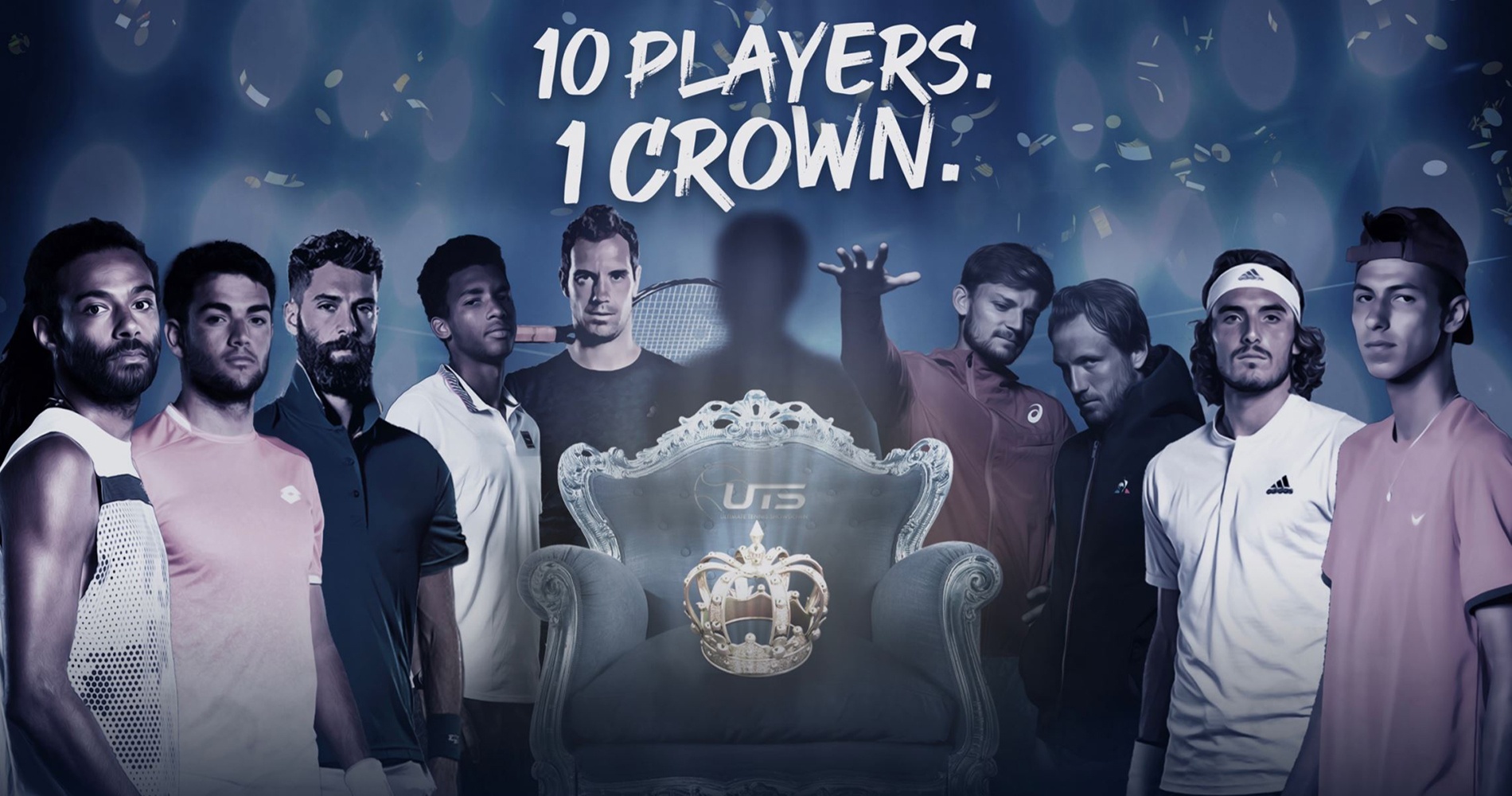UTS : 6 Facts Patrick Mouratoglou revealed to us about his new league
Patrick Mouratoglou gave details about the Ultimate Tennis Showdown, which is due to start on Saturday June 13. The founder of the competition explained more about the league’s format, and confirmed that it won’t be single elimination.
 Tennis – US Open 2019 – Patrick Mouratoglou – France
Tennis – US Open 2019 – Patrick Mouratoglou – France
1. World ranking and winner : The rules of the competition
10 players will participate in the first edition of the Ultimate Tennis Showdown, to take place at the Mouratoglou Academy, in Biot, South of France. They will face each other once during a round-robin phase, after which six players will be qualified for the knock-out phase, scheduled for the last Sunday of the competition. The top two players in the standings will clinch their births for the semi-finals, whereas the players ranked from 3rd to 6th will play quarter-finals.
“There will be a winner, a world ranking, explained Patrick Mouratoglou, founder of the UTS, in the Eurosport.fr podcast “Dip Talk”, hosted by Arnaud Di Pasquale, former French pro player. All has been put in place so it won’t be an exhibition.”
2. Four quarters and prize-money : Innovative rules
When he announced the arrival of the UTS, Mouratoglou promised an innovative format and plenty of experimentation. The matches will be played under a new format. They will last no longer than one hour, with four 12-minute periods and 2-minute changeovers between each period. Coaches will be able to take timeouts, like in basketball, for example. The prize-money regulations will also be adapted. Each match will have a financial stake.
“Each player will have a value, his purse, told Mouratoglou. The two opponents will put their purses in common and the winner will earn 70% of the total, 30% for the loser.”

3. UTS 1, the first of many to come
The UTS 1 is just the beginning of the journey in Mouratoglou’s mind. Serena Williams’ coach has already a plan for the weeks after.
“Just after the UTS 1, that will end mid-July, the UTS 2 will begin, starting the following weekend. Then five weeks after the UTS 3, etc.”
Along with this idea, Mouratoglou assured that the women will have their own UTS league sooner rather than later.
“We began with a men’s tournament, because if we had organised a women’s tournament with it, that would have created more problems. But we had very little time. We would have had twice more players, twice more empires. But we are going to integrate women very quickly.”
4. Not in opposition with ATP, WTA
In a time when tennis is looking for a united front, the UTS’ creation left some with the feeling that it would feed the consistent division in tennis. But it’s not Mouratoglou’s vision. He even proposed “to the ATP and the WTA to rule the UTS”.
“I’m not confronting anyone. I’m looking to attract people that don’t watch tennis by proposing a show that will meet their expectations, because it’s different, more modern. (…) It’s complementary, as the UTS doesn’t target the same audience as the ATP or the WTA. If we succeed and we are able to introduce tennis to people that don’t watch it today, all the tennis world will benefit. Those tours can coexist.”
5. Where you can watch the UTS
The UTS will be broadcast all over the world. Eurosport will offer two matches a day to its viewers, in Europe, in Australia or in India.
“We have other broadcasters for the other countries,” promised Mouratoglou.
But an all-access pass will also be available on UTS’ own website.
“We have a platform which will broadcast all the matches, the viewers will have to subscribe to it. There will be shows before, between and after the matches, training during the week, mini-documentaries, players interviews. That will be really different from what the ATP and the WTA produce.”
6. An open communication with the box and the public
Mouratoglou’s mantra with the UTS is to give the tennis players a space with freedom and wants to encourage them to show their emotions. But not just them, also their team.
“The players are the main characters. There are supporting characters, who are the coaches, the umpire, the family. We are going to have them play a role, because they have one. We want to know what happens on the emotional level. We want to know what happens in the box, what is said, what are the emotions in it. We want to know what the coach says, the strategic options used and why. That gives another level of understanding to the viewers. We are going to see the players on the edge and that is when we know who is who.”
Over the long-term, Mouratoglou wishes to give the audience a key role too.
“The communication between the players and the public will be one-sided for now. But the idea is that the audience can influence some things that will impact the match, to favor a given player, for example. The player will have the opportunity to interact with the public. The audience has a crucial role in TV shows like The Voice. It goes with the new way to watch shows, and sport is also a TV show.”
People in this post
More tennis news
Dubai Open: Paolini ends run of qualifier Lys, moves into last 16

Qatar Open: Bergs edges past Bautista Agut to book spot in second round

Qatar Open: Rublev too good for Bublik, moves into second round

Qatar Open: Van De Zandschulp advances to second round

Qatar Open: De Minaur eases past Safiullin to record 200th hard-court win


